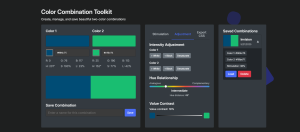Although content, social media, paid marketing, and design all play an important role in setting up a successful online business, there is one more thing you need to consider — your website speed.
Website speed or website performance is a key element to the success of any e-commerce business as it directly affects your search engine rankings and, thus, your conversion rates, too. If your goal is to stand out among your competition in Google search rankings, make sure you establish a fast website load speed first.
To understand why website speed is vital to your business and to learn how to improve it, continue reading this article.
Table of Contents
- What is a Conversion Rate?
- The Importance of Website Speed
- How to Measure Your Website Speed
- How to Improve Your Website Speed
- Conclusion
What is a Conversion Rate?
A conversion usually refers to the act of your website visitor becoming your customer by purchasing your product or service.
However, a conversion may also refer to other types of actions that your website visitor takes, such as subscribing to your newsletter, downloading a file, filling out a form, clicking on a link, etc.
Your conversion rate is measured by dividing the number of your customers by the total number of visitors to your website. For example, if you have 100 visitors and 20 of them took an action you wanted them to take (buy a product, subscribe, etc.), then your conversion rate is 20%.
The Importance of Website Speed
Your website speed is most visibly reflected in your user experience. If your users find your website to be slow to respond and load your website content, their user experience will be of lesser quality, and they will be quick to disregard your website in their future searches.
Your website speed is crucial to your business achieving:
- Repeat business (loyalty)
- Google search rankings
- High conversion rates
Repeat Business
When your website users are satisfied with your website’s responsiveness and the content you offer, they are more likely to purchase your products and services. Moreover, they might even return. In this way, you build their trust and gain their loyalty.
However, if your website visitors need to wait too long for your website pages and content to load, they might lose interest and opt for a more responsive website. Even if they did manage to purchase your product or service, they might not come back due to your poor website performance. In this way, your conversions will be lower and you will not build repeat business.
Google Search Rankings
As the most popular search engine, Google plays a vital role in helping your business grow. If your business is displayed in the Google search rankings, your chances of attracting new customers are increased.
However, your Google search rankings are closely related to your user experience, as it is one of the requirements for being ranked high. Therefore, the faster your website, the better your user experience.
Quality user experience consequently leads to higher Google search rankings, allowing your business to be discovered by more people.
Conversion Rates
The instant gratification era we have found ourselves in dictates the importance of website speed for online customers. Being able to browse and order a product or a service quickly and effortlessly can make or break a business nowadays.
If you want to achieve high conversion rates today, your website needs to operate at a speed that leaves
your potential buyers with no room for hesitation.
The more time it takes your website to respond and load, the less determined your potential customer will be to purchase what you offer. In other words, if your website is fast, you will make more sales.
Therefore, if you can improve your website speed by only one second, your conversion rates could improve by as much as 27%.
How to Measure Your Website Speed
There are specific metrics that can help you see how fast your webpage is. These include:
- Loading
- Visual stability
- Interactivity
Loading
Loading refers to the time it takes for your website content to load. This metric tells how useful your website is.
If the content is able to load quickly, your website users are informed quickly about what they are
interested in.
Visual Stability
Visual stability is linked to the quality of the user experience, as it measures how frequently your users are exposed to a sudden layout shift.
A layout shift refers to visible page elements changing position and size, thus changing the order of the content around them. This can be quite frustrating and can lead to your users having to click on a chosen item several times. This, of course, reduces the quality of their experience, along with your conversion rates.
Interactivity
Interactivity refers to your website being usable. It is measured by how long it takes the browser to
respond to a user’s request, such as clicking a button on a website page.
How to Improve Your Website Speed
There are certain steps you can take to improve your website speed:
Analyze your current website speed
Before you make any changes, check how your website is doing at the moment. You can create an online store speed report and compare your speed to your competition.
Identify areas of improvement
Once you have analyzed your current website speed, you can determine which areas require some improvement. For example, you might decide to focus on making your website mobile-friendly.
Optimize your images
Website images often pose an obstacle to a greater website speed. Therefore, image optimization, including compression and resizing, can make a big difference.
Maintain your website speed regularly
Make sure you take these steps regularly and keep records of how your website speed is changing. This will result in continual growth in your customers’ loyalty, conversion, and Google Search rankings.
Conclusion
To ensure your online business success and achieve high conversion rates, keep an eye on your website speed and regularly maintain and improve it. This will enhance your user experience and build your customers’ trust. In turn, you will develop repeat business and higher Google search rankings.




